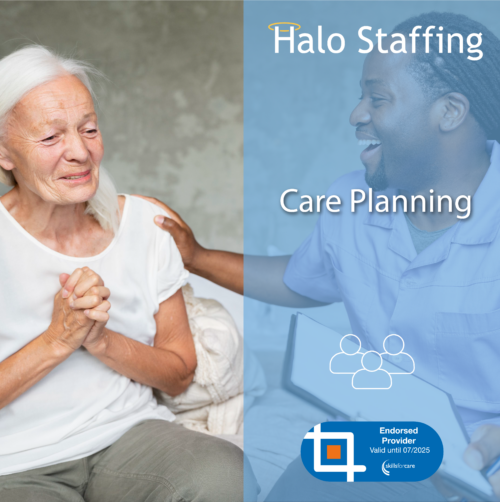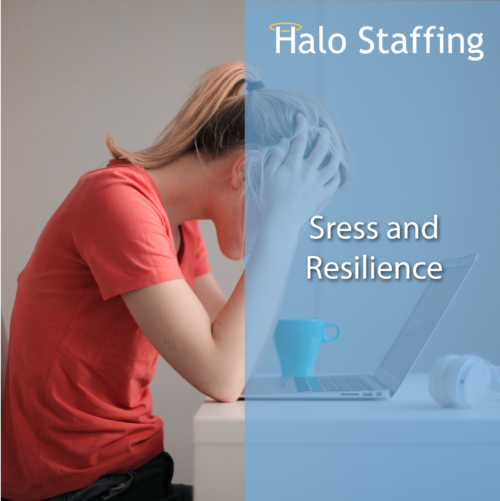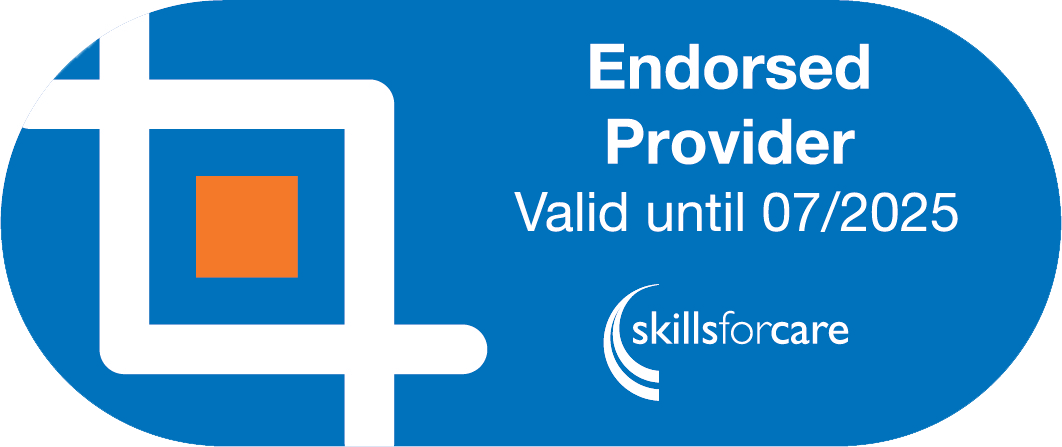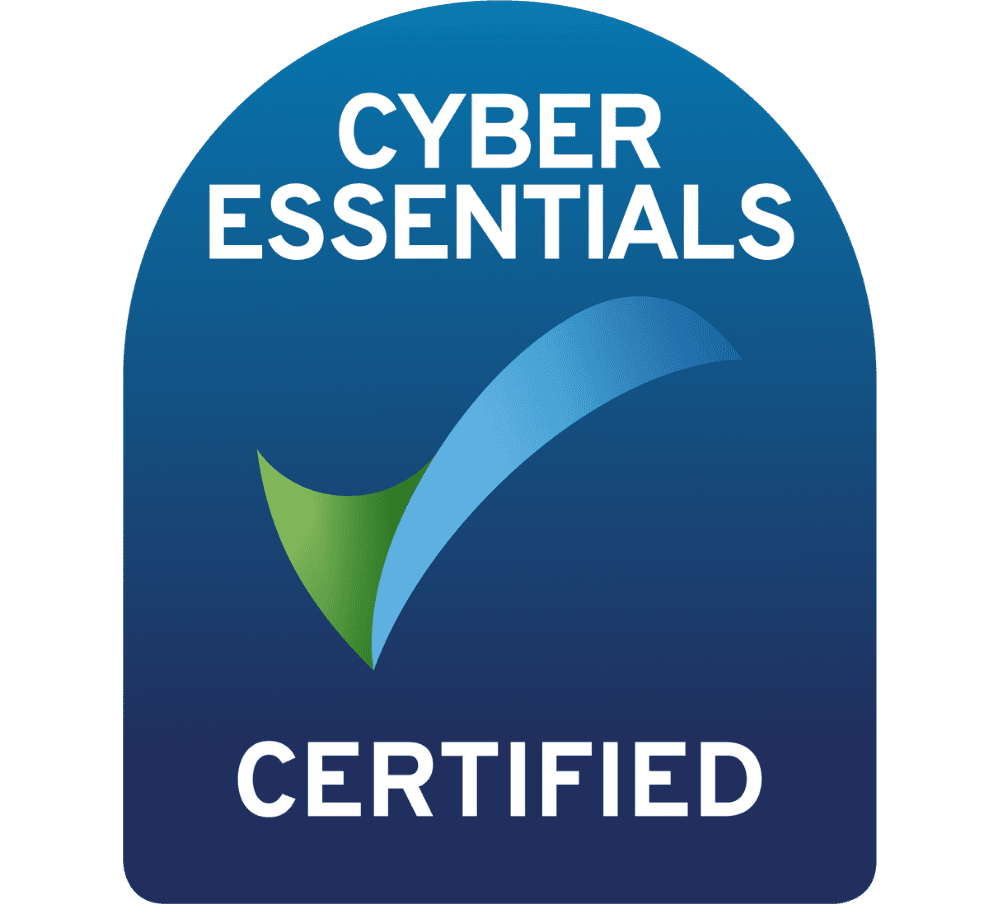Our care training courses are suitable for individuals wishing to develop their skills, new care workers, care workers who are looking to update their knowledge and for providing care training courses for the staff you employ. You can buy our courses individually or as a group, you can quickly and easily purchase multiple courses through our Group Creation page which can be found HERE.
Search
Search by any keywords specific to find the course you are looking for.
-
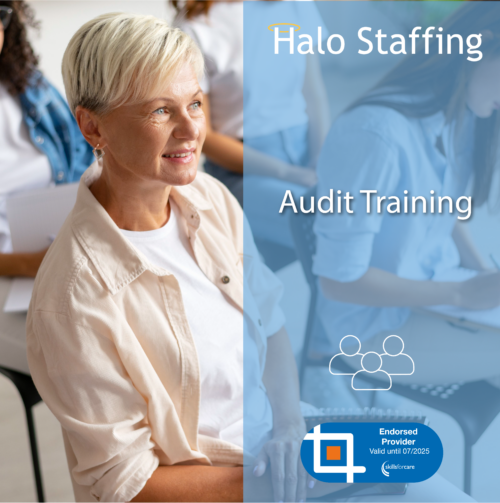 Aim: To know more about how initiating basic audit processes can strengthen continuous quality improvement and CQC compliance. Objectives: By successfully completing this course you will be able to:
Aim: To know more about how initiating basic audit processes can strengthen continuous quality improvement and CQC compliance. Objectives: By successfully completing this course you will be able to:- Understand what care audit is and how you can use it to improve the quality of your services
- Understand the key stages of a care audit
- Describe the relevant legislations in the UK
- Describe the importance of involving and supporting the people who use your services
- List some tips and guidance for conducting care audit in your organisation
- Understand what is meant by supporting personalisation of services
- Understand everything about auditing the care plans
- Describe the importance of audit action plans
- Describe how to close the audit loop and report the progress
-
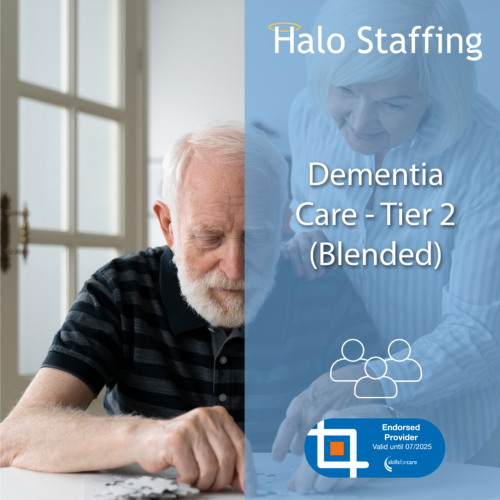 Aim: To provide the best outcomes for people living with dementia. Objectives: By successfully completing this course you will be able to:
Aim: To provide the best outcomes for people living with dementia. Objectives: By successfully completing this course you will be able to:- Understand what dementia is and explain the importance of dementia awareness
- Describe the process of dementia identification, assessment, and diagnosis
- Explain about dementia risk reduction and prevention
- Describe what is person-centred dementia care
- Understand the importance of communication, interaction and behaviour in dementia care
- Explain the importance of health and well-being in dementia care
- Describe about the pharmacological interventions in dementia care
- Understand how to safeguard and promote the independence of people with dementia
- Explain the role of family and carers as partners in dementia care
- Describe the importance of equality diversity and inclusion in dementia care
- Understand the law, ethics and safeguarding in dementia care
- Understand what is end of life dementia care
- Explain about the research and evidence-based practice in dementia care
-
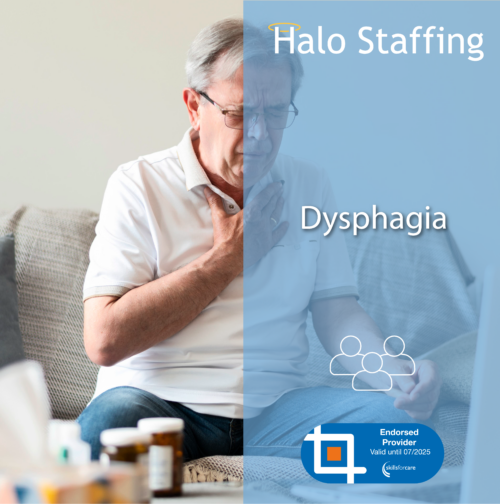 Aim: To gain a complete understanding of and be able to support individuals with dysphagia (swallowing problems). Objectives: By successfully completing this course you will be able to:
Aim: To gain a complete understanding of and be able to support individuals with dysphagia (swallowing problems). Objectives: By successfully completing this course you will be able to:- Demonstrate a complete understanding of swallowing process and dysphagia including its signs and symptoms
- Describe the legislations relevant to dysphagia in the UK
- Identify common causes and underlying medical conditions associated with dysphagia
- Understand the implications of dysphagia on a person’s health and wellbeing
- Describe the importance of maintaining adequate hydration and nutrition with safe and efficient swallowing function
- Describe how to reduce the signs and symptoms of swallowing difficulty including the utilisation of various strategies to prevent aspiration and choking
- Understand the importance of providing oral hygiene and self-care education
- Understand how to create an individualised care plan to meet each person's needs
- Identify your role in supporting individuals with dysphagia
- Understand how to develop practical skills to support people with dysphagia in eating and drinking safely.
- Identify when and how to make a referral, understand the process of assessment, and describe the various clinical assessment techniques used in evaluating the swallowing function
- Describe the importance of a thorough patient history in dysphagia assessment process
- Recognise when you need to collaborate with other healthcare professionals
- Describe how to communicate effectively with the individual and their family members about the implications of dysphagia
- Understand the ethical considerations related to dysphagia assessment and treatment
- Describe the cultural factors that may impact a patient's experience and adherence to treatment.
-
 Aim: To enable managers and leaders to hold open and supported conversations and be able to provide effective supervision. Objectives: By successfully completing this course you will be able to:
Aim: To enable managers and leaders to hold open and supported conversations and be able to provide effective supervision. Objectives: By successfully completing this course you will be able to:- Explain the purpose and functions of supervision
- Understand the benefits of conducting regular supervisions
- Describe the benefits of managing performance
- Explain how to conduct performance conversations
- Understand what a supervision template or checklist is
- Describe how to coach staff through supervision conversations
- Understand how to prepare for the supervision
- List a few tips for giving feedback
- Understand how to deal with conflicts in supervision
- Explain how to document the supervision and what should be included in it
- List the behaviours needed for sensitive or complex conversations
- Describe the strategies and tools required for open and supported discussions
- Understand how to encourage Two-Way Communication
- Describe what is positive reinforcement and how to use it
- Understand the importance of personal and professional development
- Describe what is wellbeing and emotional support
-
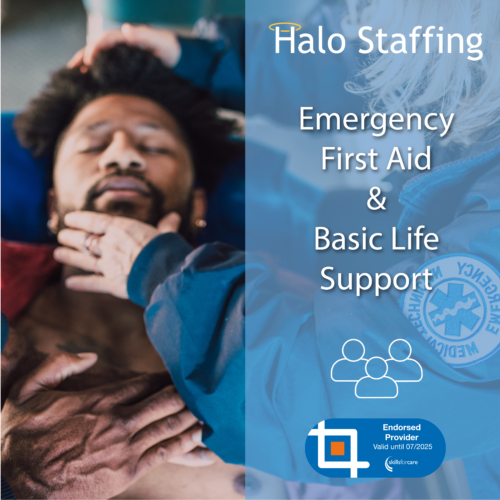 Aim: To understand how to preserve life, prevent the situation worsening and promote recovery. Objectives: By successfully completing this course you will be able to:
Aim: To understand how to preserve life, prevent the situation worsening and promote recovery. Objectives: By successfully completing this course you will be able to:- Describe what is meant by First Aid
- Explain about the 3 priorities of First Aid
- Describe the difference between an accident and an incident
- Describe the procedure to assess the casualty’s condition
- Explain how to follow the Resuscitation Council’s guidelines, including the ABCDE approach
- Explain how to help an unconscious but breathing person
- Explain how to help an unconscious and not breathing person, including cardiopulmonary resuscitation (CPR)
- Identify what a defibrillator is, and how to use an automated external defibrillator (AED)
- Explain how to provide first aid for wounds, bleeding, burns, scalds, choking, seizures, shock, and issues with blood circulation
- Identify the signs of 3 heart conditions
- Identify the signs of a stroke
- Describe the symptoms, triggers, and action plan to help anyone affected by anaphylaxis
- Identify the essential tasks to be performed after providing any form of first aid
-
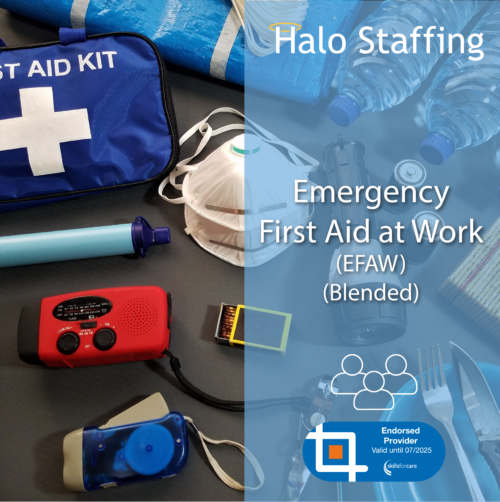 Aim: To perform basic first aid in an emergency situation at work. Objectives: By successfully completing this blended course you will be able to:
Aim: To perform basic first aid in an emergency situation at work. Objectives: By successfully completing this blended course you will be able to:- Explain the definition of First Aid
- Identify the 3 priorities of First Aid
- Describe the importance of preventing cross infection
- Explain and demonstrate how to assess the situation and circumstances in order to act safely, promptly, and effectively in an emergency
- Explain and demonstrate how to administer first aid to a casualty who is unconscious but breathing
- Explain and demonstrate how to administer first aid to a casualty who is unconscious and not breathing
- Explain and demonstrate how to perform cardiopulmonary resuscitation (CPR)
- Explain the use of an automated external defibrillator (AED)
- Explain what seizures are and demonstrate how to provide first aid to an individual who is suffering from them
- Explain and demonstrate how to help an individual who is choking
- Explain and demonstrate how to provide first aid for wounds, bleeding, burns, scalds, shock, and issues with blood circulation
- Describe the need for record keeping
-
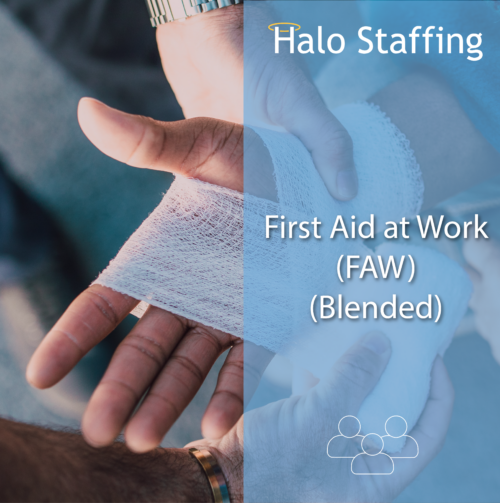 Aim: To reduce the effects of injury or illness suffered at work, whether caused by the work itself or not. Objectives: By successfully completing this blended course you will be able to:
Aim: To reduce the effects of injury or illness suffered at work, whether caused by the work itself or not. Objectives: By successfully completing this blended course you will be able to:- Explain the importance of first aid at work
- Describe the legislation governing first aid at work
- Explain the 2 priorities of first aid at work
- Explain what is meant by adequate and appropriate first aid arrangements
- Describe the difference between an appointed person and a first aider
- Explain and demonstrate how to administer first aid to a casualty with injuries to bones, muscles, ligaments, joints and injuries to the spine
- Explain and demonstrate how to administer first aid to a casualty with chest injuries
- Explain and demonstrate how to provide first aid for burns and scalds, eye injuries, poisoning, and anaphylactic shock
- Recognise the presence of major work-related illnesses
- Explain and demonstrate how to provide first aid for heart attack, stroke, epileptic seizures, asthma attack and diabetic emergencies
- Explain what must be reported under RIDDOR
-
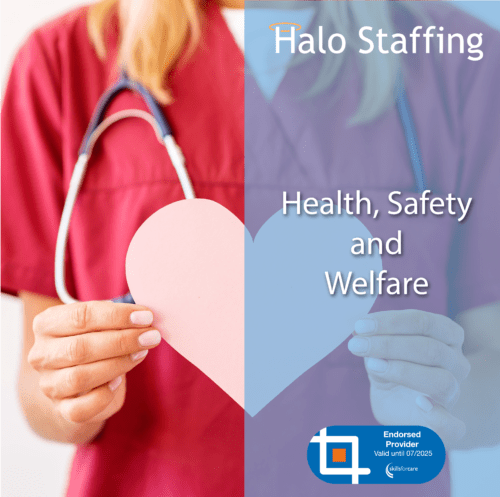 Aim: To ensure the health, safety, and wellbeing of people in your healthcare organisation Objectives: By successfully completing this course, you will be able to:
Aim: To ensure the health, safety, and wellbeing of people in your healthcare organisation Objectives: By successfully completing this course, you will be able to:- State why organisations have a commitment to delivering services safely
- Describe at least 4 ways of acting that are in line with the legislation, policies and procedures around the health and safety
- State how to find your organisation’s arrangements for consulting with employees on health and safety matters
- Identify how to find your organisation’s health and safety policies
- State the meaning of the terms hazard, risk, and risk assessment
- Describe at least 8 common workplace hazards
- Recognise how identified risks can be managed
- Identify at least 5 ways to apply and promote safe working practices in your job role
- List at least 4 actions you can take to ensure patient safety
- Recognise the importance of reporting health and safety concerns
- State the correct reporting processes used to gather information to help with managing risks
- Identify the appropriate methods to raise health and safety concerns, and who they should be raised to
- Describe your responsibilities in reporting incidents, ill health, and near misses
-
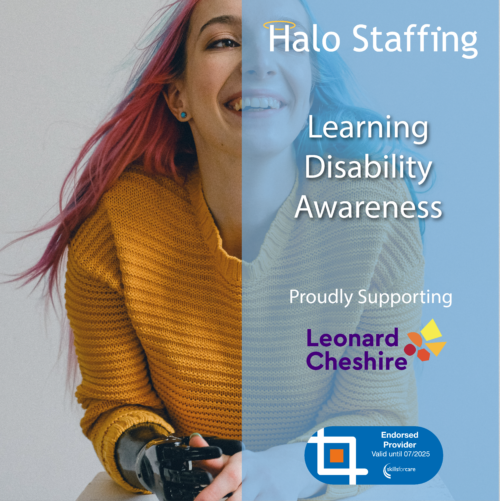 Aim: Support disabled people to live, learn and work as independently as they choose. Objectives: By successfully completing this course you will be able to:
Aim: Support disabled people to live, learn and work as independently as they choose. Objectives: By successfully completing this course you will be able to:- Explain what a learning disability is
- Identify the difference between a learning difficulty and a learning disability
- List at least 3 categories and 10 types of learning disabilities
- Explain what is profound and multiple learning disability (PMLD)
- Explain the effects of learning disability on the person and their family
- List at least 3 pieces of legislation relevant to learning disability
- Describe how to support people with learning disability
- List 10 values and behaviours needed to support people with a learning disability
- Describe the role of partners in care and support
-
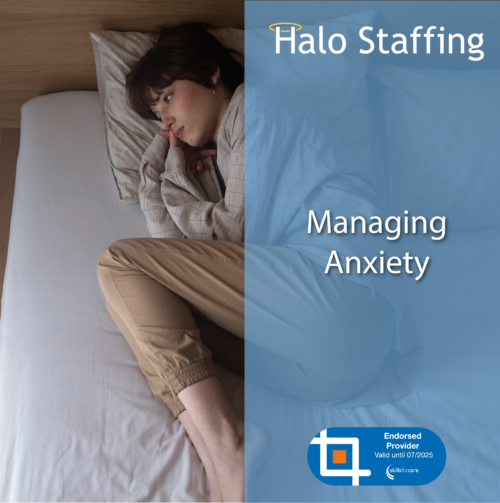 Aim: To understand what anxiety is and how to assist people who have anxiety Objectives: By successfully completing this course, you will be able to:
Aim: To understand what anxiety is and how to assist people who have anxiety Objectives: By successfully completing this course, you will be able to:- Recognise at least 10 signs of anxiety
- Describe what an anxiety disorder is
- State at least 5 symptoms of a Generalised Anxiety Disorder
- Recognise that a Generalised Anxiety Disorder can affect different people in different ways
- Recognise at least 4 situations that could lead someone to develop an anxiety disorder
- Describe what Cognitive Behavioural Therapy is
- List at least 3 techniques for helping a person with anxiety to cope with the symptoms of an anxiety disorder
- List at least 3 self-help techniques for coping with the symptoms of an anxiety disorder
-
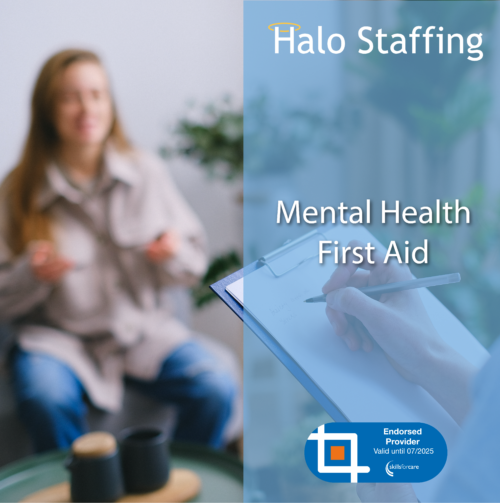 Aim: To ensure that all members of staff are supported in the workplace. Objectives: By successfully completing this course you will be able to:
Aim: To ensure that all members of staff are supported in the workplace. Objectives: By successfully completing this course you will be able to:- Identify a minimum of 5 basic workplace causes of mental health issues
- Explain how to implement at least 5 strategies to tackle basic causes of basic mental health issues
- Describe the benefits of promoting openness about mental health
- Identify the 6 core standards of mental health first aid
- Explain how to create a workplace mental health plan
- List at least 6 strategies that you can implement to promote the wellbeing of all members of staff
- Identify at least 3 benefits of encouraging conversations about mental health
- Explain why it is important to provide employees with basic mental health support
- Identify at least 10 factors of the work environment of your team members that promote mental health
- Explain how to implement proactive opportunities for your team members to discuss their health and wellbeing, and the impact their work environment has on it, with their team leader(s)
- List at least 6 techniques for training individuals to be able to treat their colleagues in a way that does not negatively impact their mental health
- List at least 3 benefits of regularly monitoring the mental health of your team members
- List at least 3 methods of monitoring the mental health of your team members
- Explain what an annual wellbeing report is, and to know how to create one
-
 Aim: To reduce the risk of modern slavery in your organisation Objectives: By successfully completing this course you will be able to:
Aim: To reduce the risk of modern slavery in your organisation Objectives: By successfully completing this course you will be able to:- Define what modern slavery is
- Describe what the Modern Slavery Act 2015 entails
- List at least 7 types of modern slavery
- List at least 7 signs of modern slavery
- State the impact modern slavery has, on both people and businesses
- Recognise at least 6 measures to reduce modern slavery in your organisation
- Describe what to do should you have a concern about modern slavery in your organisation
- Describe what to do if you are a member of a designated organisation and you encounter an instance of modern slavery
-
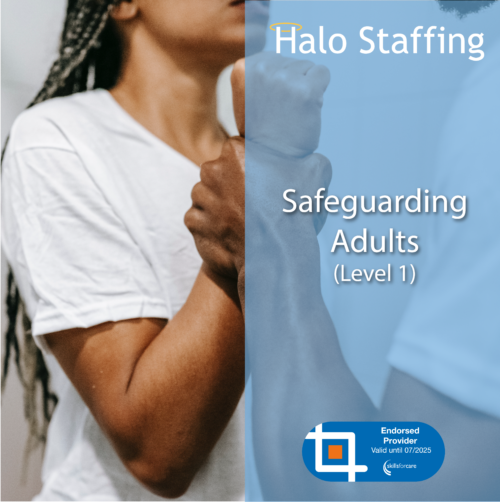 Aim: To protect people and keep them safe from harm and abuse in a health care setting. Objectives: By successfully completing this course you will be able to:
Aim: To protect people and keep them safe from harm and abuse in a health care setting. Objectives: By successfully completing this course you will be able to:- Describe what is meant by safeguarding adults
- Describe your role and responsibilities in safeguarding adults
- List at least 8 categories of abuse
- Identify what constitutes as harm, abuse and neglect
- Describe why an individual may be vulnerable to harm or abuse
- Identify at least 8 signs of harm, abuse or neglect
- Identify who to report if you know an individual has been abused
- To be able to describe the relevant legislation
-
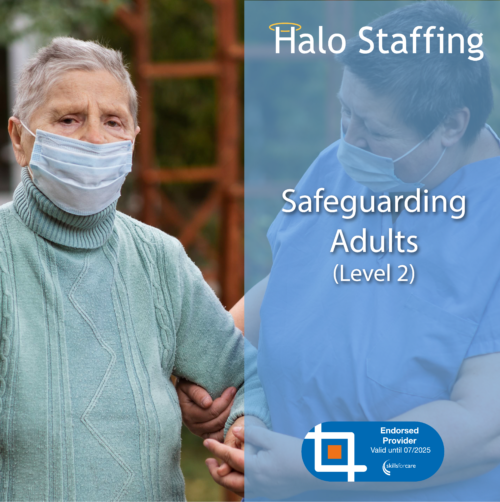
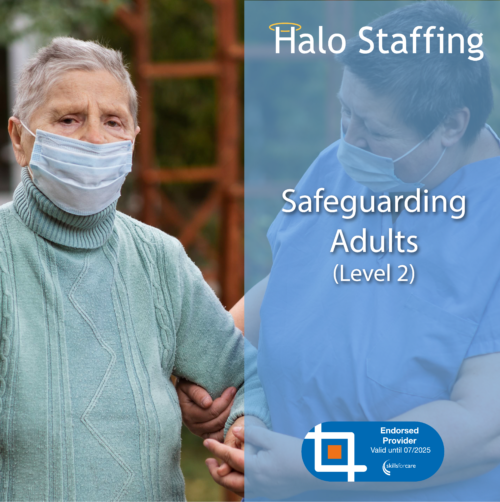 Aim: To understand more on how to protect people safe from harm and abuse in a health care setting. Objectives: By successfully completing this course you will be able to:
Aim: To understand more on how to protect people safe from harm and abuse in a health care setting. Objectives: By successfully completing this course you will be able to:- Understand what constitutes harm, abuse and neglect and be able to identify any signs of harm, abuse, or neglect
- List what actions to take if they have concerns, including to whom you should report your concerns and from whom to seek advice
- Describe what is meant by effective advocacy
- Identify your professional role, responsibilities, and professional boundaries and those of your colleagues in a multidisciplinary team and multi-agency setting
- List the risk factors for radicalisation and know who to contact regarding preventive action and supporting those persons who may be at risk of, or are being drawn into, terrorist related activity
- Describe how to maintain appropriate records including being able differentiate between fact and opinion
- Identify the appropriate and relevant information and how to share it with other teams
- Document safeguarding concerns in a format that informs the relevant staff and agencies appropriately
- Identify how and when to refer to social care in accordance with organisational policies if you have identified an adult safeguarding concern
-
 Aim: To be able to recruit in a way that is safe for children and adults in your care Objectives: By completing this course, you will be able to:
Aim: To be able to recruit in a way that is safe for children and adults in your care Objectives: By completing this course, you will be able to:- Recognise the importance of the recruitment and selection process
- Identify any training and safeguarding requirements
- State 11 important steps in the recruitment and selection process
- Describe what safeguarding requirements are inherent to certain jobs
- Explain how to ensure a fair process while minimising risks
- State the safeguarding requirements of a role within the application form
- Recognise the importance of an identity check
- Explain what should be included in pre-application information
- Identify the purpose of a DBS check
- State what a regulated activity is
- Describe what a single central record is
- State at least 5 essential interview skills
-
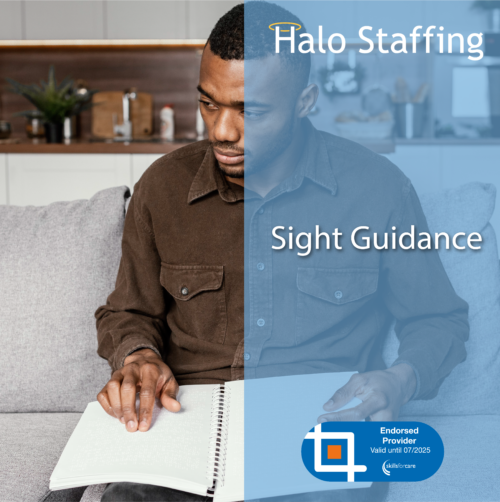 Aim: To be able to guide an individual with limited or no vision comfortably and effectively Objectives: By successfully completing this course you will be able to:
Aim: To be able to guide an individual with limited or no vision comfortably and effectively Objectives: By successfully completing this course you will be able to:- Describe what sight loss is
- List the 6 most common eye conditions and causes of sight loss
- Describe the different levels of sight loss
- List 3 relevant legal policies concerning sight loss
- State 5 of the best ways to approach an individual who is partially sighted or severely sight impaired
- Describe the best ways to comfortably, safely, and effectively guide an individual with sight loss
-
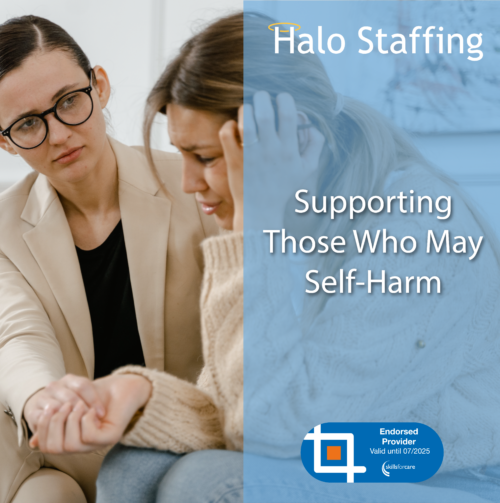 Aim: To be able to support individuals with care and understanding, and reduce their need to self-harm Objectives:
Aim: To be able to support individuals with care and understanding, and reduce their need to self-harm Objectives:- To describe what self-harm is
- To identify at least 6 signs of self-harm
- To describe how to treat individuals that self-harm with care and compassion
- To describe your safeguarding duties if you suspect an individual is self-harming
- To be able to appropriately respond to signs of self-harm
- To describe your safeguarding duties if an individual is self-harming
- To describe how to deliver appropriate care after an individual has self-harmed
- To be able to describe what harm minimisation strategies are, and how they should be used
- To be aware of potential intervention strategies for long-term progress
-
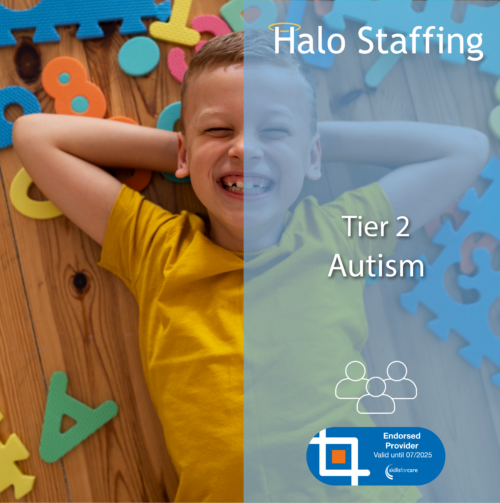 Aim: To provide people with responsibility for providing care and support for an autistic person or people, but who could seek support from others for complex management or complex decision-making, with the knowledge and understanding required to support autistic children, young people, and adults. Objectives: By successfully completing this course you will be able to:
Aim: To provide people with responsibility for providing care and support for an autistic person or people, but who could seek support from others for complex management or complex decision-making, with the knowledge and understanding required to support autistic children, young people, and adults. Objectives: By successfully completing this course you will be able to:- Understand the spectrum of autism including abilities, disabilities, and spiky skills profiles
- Understand the importance of equal, timely access to autism assessment and diagnosis and some of the barriers to diagnosis
- Describe the legislations relevant to autism in the UK
- Describe quality care, person-centred support, and strategies to support autistic individuals
- Understand how to support autistic people to deal with change
- Understand how the behaviour of an autistic individual may indicate stress
- Understand how to interpret a change in an autistic individual’s presentation or behaviour
- List common issues faced by autistic people and describe how to support them
- Understand stimming
- Understand the activities that people with autism adopt to ‘self soothe’ or ‘self-regulate’ or just ‘calm down’
- Understand the common communication needs of autistic people
- Understand how health inequality affects autistic people and what are the main causes of it
- List the reasonable adjustments to be put in place to access health care and other services
- Understand the role of health action plans/health passports in signposting important adjustments
- Understand about the types of abuse which may be especially relevant for autistic people
- Understand that people with autism have the right to make decisions and know how to support them in this process
- Describe how to raise a safeguarding concern and where to get information and advice on Mental Capacity Act or Equality issues
- List your responsibilities as a care provider for an autistic person
- Understand the importance of working with others, including what role do family members, carers and supporters play in the lives of autistic people
- including what role family carers and supporters may play in the lives of autistic people
- Understand how to meet the needs autistic people in the workplace
-
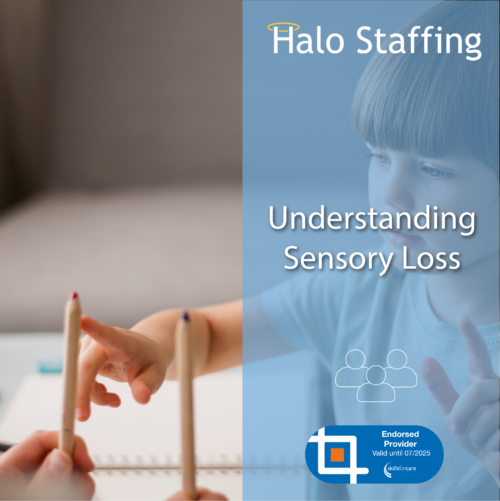 Aim: To understand and provide support to deafblind, deaf and hard of hearing people and communities. Objectives: By successfully completing this course you will be able to:
Aim: To understand and provide support to deafblind, deaf and hard of hearing people and communities. Objectives: By successfully completing this course you will be able to:- Demonstrate a general awareness of deafblind, deaf, and hard of hearing people and communities
- Describe the legislations relevant to sensory loss in the UK
- Identify the barriers that deafblind, deaf, and hard of hearing people face
- List the ways in which deafblind, deaf, and hard of hearing people communicate
- Understand how to implement positive methods of communication for those who are deafblind, deaf, or hard of hearing
- Describe positive methods of supporting individuals who are deafblind, deaf and hard of hearing
-
 Aim: To be able to effectively and responsibly respond to, manage, and react to complaints. Objectives: By successfully completing this course you will be able to:
Aim: To be able to effectively and responsibly respond to, manage, and react to complaints. Objectives: By successfully completing this course you will be able to:- Recognise when an individual is making a complaint
- Describe 3 types of customer complaints
- Explain how to effectively listen to and understand customer complaints
- Describe what the customer is hoping to achieve by making the complaint
- Explain why it is important for you to understand and help the customer understand, what is achievable as a result of the complaint, and be clear as to what the possible outcomes may be
- Describe an estimate for what the timeframe for dealing with the complaint may be
- Explain how to set firm boundaries with individuals making complaints, and be able to firmly and decisively act when those boundaries are breached
-
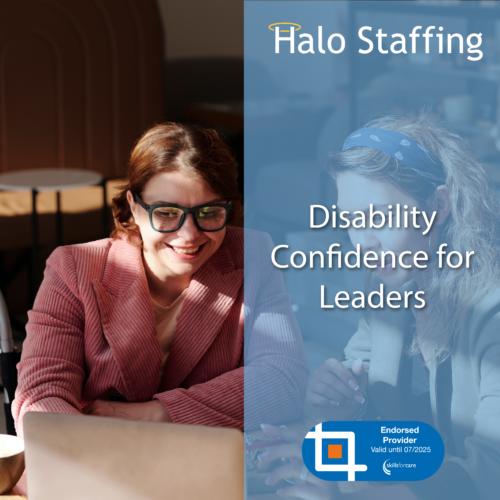 Aim: To know how to embed inclusivity within your organisation and wider practices, with regards to disabilities and mental health. Objectives: By successfully completing this course you will be able to:
Aim: To know how to embed inclusivity within your organisation and wider practices, with regards to disabilities and mental health. Objectives: By successfully completing this course you will be able to:- Describe the Disability Confidence Framework
- List at least 3 benefits of the Disability Confidence Framework
- Explain about the different levels of the Disability Confidence Framework
- Describe how long a typical Disability Confidence Framework accreditation lasts for
- Describe how the Voluntary Reporting Framework works
- Describe the actions necessary to achieve or maintain the different levels of the Disability Confidence Framework
-
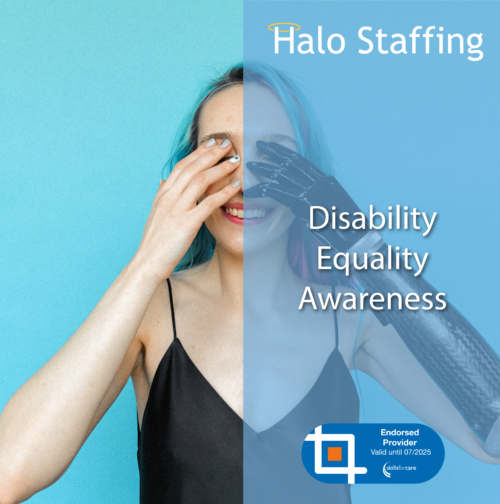 Aim: To be able treat disabled individuals equally and equitably. Objectives: By successfully completing this course you will be able to:
Aim: To be able treat disabled individuals equally and equitably. Objectives: By successfully completing this course you will be able to:- Explain what a disability is
- Describe what is contained in the Equality Act 2010, with regards to preventing discrimination against disabled individuals
- Explain the distinction between visible and invisible disabilities
- Describe the concepts of equality and equity
- Describe the social model of disability
- Identify 10 ways that an individual may require assistance due to a disability
- Identify 5 reasonable adjustments to your behaviour that you can make to assist disabled individuals around you
- Explain why it is important to follow the basics of etiquette, and not to make assumptions about disabled people
-
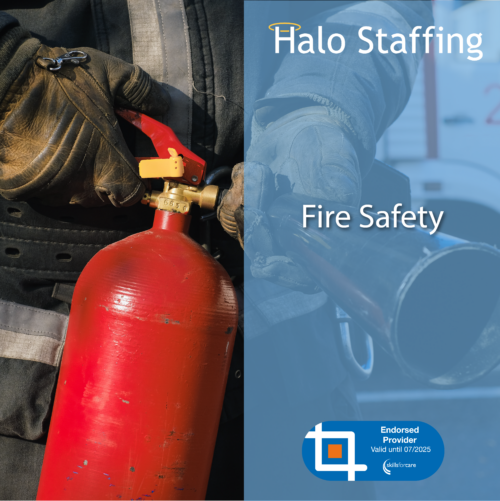 Aim: To keep people safe by reducing the risk of, and knowing how to react to, fire in the workplace. Objectives: By successfully completing this course you will be able to:
Aim: To keep people safe by reducing the risk of, and knowing how to react to, fire in the workplace. Objectives: By successfully completing this course you will be able to:- Describe the characteristics of fire, smoke, and toxic fumes
- Identify at least 6 fire hazards in the work environment
- Explain how to recognise any significant findings of fire risk evaluations
- Explain how to perform basic fire prevention, and the importance of local fire safety protocols
- Describe when it is necessary to raise the fire alarm, how to raise the fire alarm, and what to do if the fire alarm is raised
- Describe the actions to take if fire breaks out or if smoke is detected
- Identify the different types of fire extinguishers
- Explain about the different uses of fire extinguishers
- Identify the safety precautions associated with fire extinguishers
- Explain about the importance of being familiar with evacuation procedures and associated escape routes
-
 Aim: To ensure the safe and secure handling of information within a healthcare setting Objectives: By successfully completing this course, you will be able to:
Aim: To ensure the safe and secure handling of information within a healthcare setting Objectives: By successfully completing this course, you will be able to:- Identify at least 7 key principles of information governance
- Describe why information governance is important
- List at least 2 pieces of legislation related to information governance
- List at least 3 different types of information
- Describe how to comply with relevant legislation on information governance
- Identify at least 6 threats to data security
- Identify any breaches of data protection and how to report them
- Describe how to implement security measures to keep confidential information safe
- List the 8 Caldicott Principles
- Recognise how to gain the consent of an individual if it is deemed necessary to share information
- Identify your responsibilities as a healthcare professional under the Freedom of Information Act 2000
- State the benefits of good informational governance
-
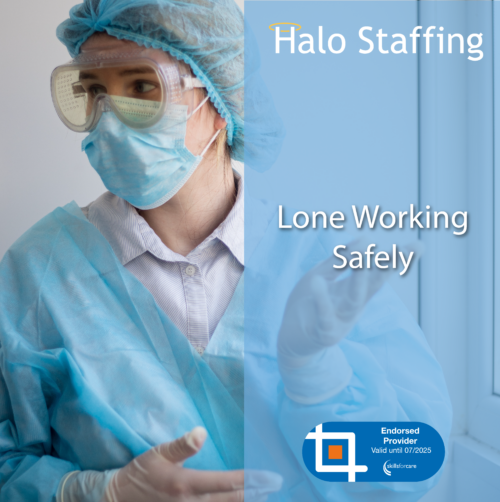 Aim: To be able to safely and efficiently work by yourself without close or direct supervision. Objectives: By successfully completing this course you will be able to:
Aim: To be able to safely and efficiently work by yourself without close or direct supervision. Objectives: By successfully completing this course you will be able to:- Describe at least 3 things to consider reducing the risks of lone working
- List at least 3 situations that may make a lone worker more at risk of violence
- Explain how to successfully complete a risk assessment
- Describe how lone working can affect stress levels and mental health
- Describe how the training needs of a lone worker can differ
-
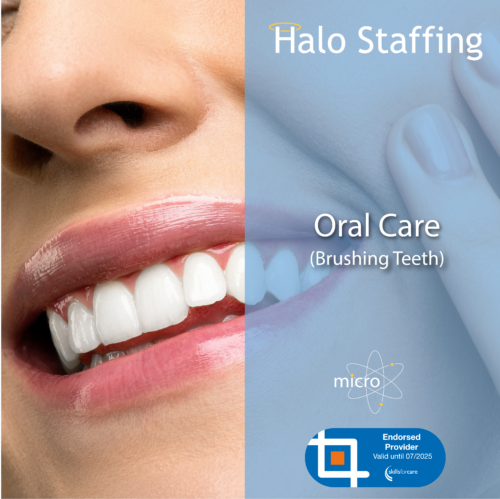 Aim: To be able to brush the teeth of others safely and effectively. Objectives: By successfully completing this course you will be able to:
Aim: To be able to brush the teeth of others safely and effectively. Objectives: By successfully completing this course you will be able to:- Perform risk assessment and gain permission
- Describe the items required for this task
- Describe the PPE required for this task
- Brush the teeth in a careful and methodical manner
- Understand what to do if you observe any issues
- Describe how to update the records
-
 Aim: To be able to promote good sexual and reproductive health. Objectives: By successfully completing this course you will be able to:
Aim: To be able to promote good sexual and reproductive health. Objectives: By successfully completing this course you will be able to:- Describe the legal standing around your involvement in caring for an individual’s sexual health
- Identify the basic anatomy involved in sexual health
- Describe the specifics of consent, and where consent has and has not been given
- List 10 different contraceptive methods, and their side effects
- Describe what do when an individual may be planning a pregnancy
- Describe what to do when an individual has an unexpected pregnancy
- Identify 5 Sexually Transmitted Infections and Sexually Transmitted Diseases
- Describe what to do when an individual is concerned they may have a Sexually Transmitted Infection or Sexually Transmitted Disease
- Identify the appropriate steps involved when safeguarding an individual’s sexual health
- Explain how to get an individual to be involved in their own sexual health
-
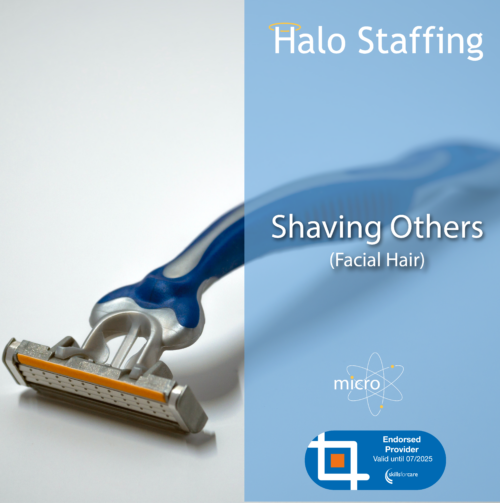 Aim: To be able to shave the facial hair of others safely and effectively. Objectives: By successfully completing this course you will be able to:
Aim: To be able to shave the facial hair of others safely and effectively. Objectives: By successfully completing this course you will be able to:- Perform risk assessment and gain permission
- Describe the items required for shaving
- Describe the PPE required for this task
- Perform the shave in a careful and methodical manner
- Describe what to do if you observe any cut or bleeding
- Describe how to update the records and body map

